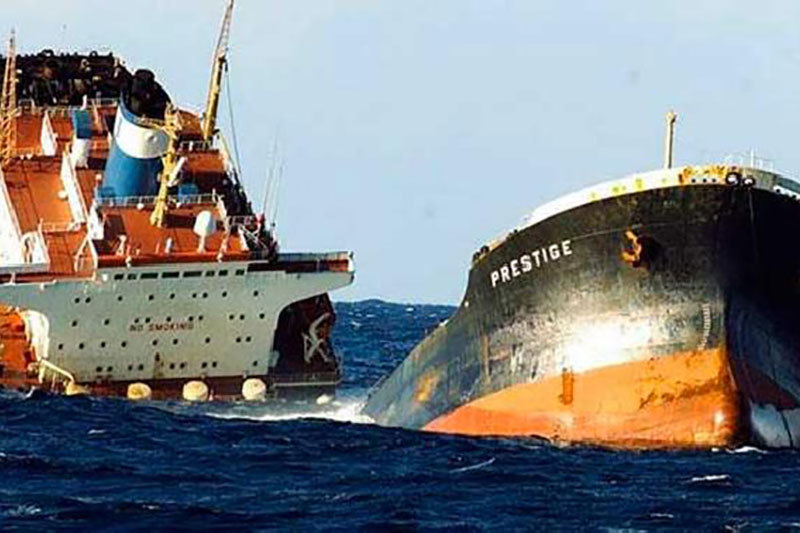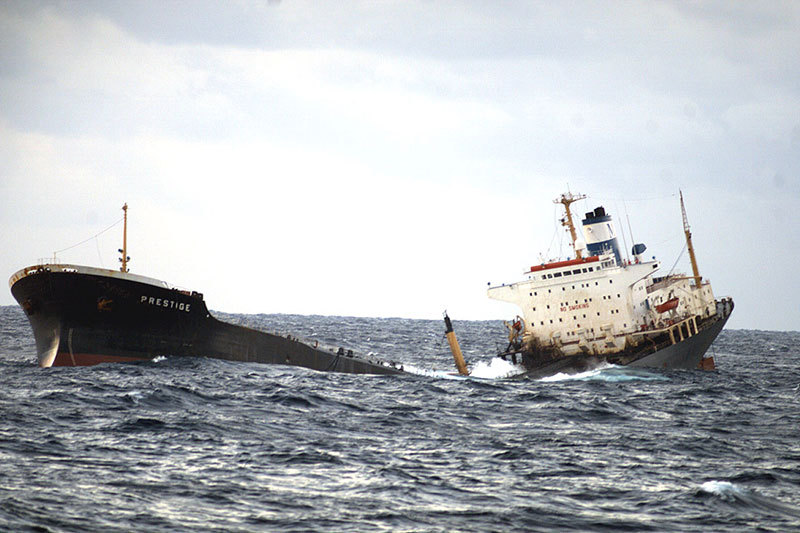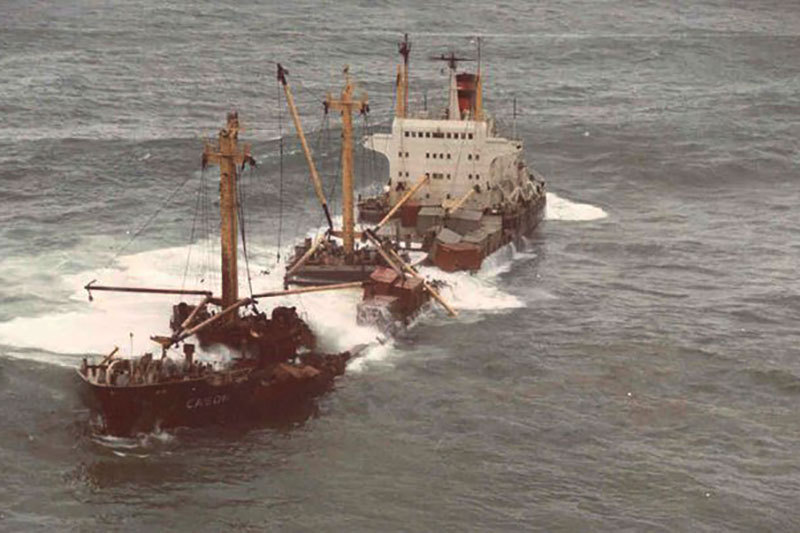The whole coastline that we are contemplating since we find ourselves, forms the Death Coast, abrupt, rocky and full of dangerous basses and cliffs, is witness to numerous shipwrecks, which claimed a multitude of human lives, this being no larger thanks to the Generosity and the heroism of the people of these lands, some of whom came to endanger their lives to save those of others.
The reason for these shipwrecks is simple; Strong ocean currents, lots of cliffs, shoals, submerged rocks a few meters deep, frequent storms, sudden mists and a wind that can sometimes exceed 120 kilometers per hour.
From the year 1,345 to the present day, there are documented 633 sinkings in the Coast of Death and for that reason numerous stories appeared like those of the Raqueiros, local version of the marine pirates, that came to cause shipwrecks confusing to the ships and making them embark, obtaining Precious booties.
These ships that today are shipwrecked in our coasts are alive examples of very concrete moments of the history when in the century of Spanish gold, Spain established an almost universal dominion on the seas being well represented in this coast the shipwrecks of the boats That crossed this route, like the 20 ships of the fleet of the Spanish navy directed by Martín de Padilla in 1596, sunk in the bosom of Finisterre right at the feet of the lighthouse.
In the Victorian era, when England first exercised world hegemony, it is worth noting the wreckage due to a great storm of the British Mail Steam, Great Liverpool, in February 1846 where two women and a child died or the great battleship British HMS Captain who crashed against the rock O centolo, rock that we can see from here, to sink later due to a storm in 1870 In this catastrophe lost 482 crew.
In the nineteenth century, with European immigration and especially Spanish bound for America, the Great Transatlantic German Salier wrecked and disappeared without a trace on these coasts with more than 400 people on board, one night in December 1846.
Another remarkable shipwreck is that of the corvette Bayonnaise, one of the most famous ships that France has ever had in its navy, in full Napoleonic Wars, was sunk in the beach of Langosteira de Finisterre in 1803. The ship covered the route of Havana To Ferrol when he was pursued by the English ship HMS Arden. The Bayonnaise was stranded by his own crew who abandoned him after setting fire to him. The ship exploded at midnight.
Although the wreck that deserves a special mention for the proximity in time and the damage caused in our coasts is the Prestige. On 13 November 2002, the Prestige monocoque tanker crashed in a storm while it was carrying 77 000 tonnes of fuel oil off the Coast of Death, and after several days of maneuver to move away from the Galician coast, About 250 km of it. The discharge of the cargo caused one of the largest environmental catastrophes in the history of navigation, both the amount of pollutants released and the extent of the area affected.
The episode had a special incidence in Galicia, where it also caused a political crisis and an important controversy in the public opinion.
With the shipwrecks that happened on this Coast of Death, we could write the history of humanity, simply through the found material remains found, thanks to this great maritime traffic and commercial route, one of the most important in history.


